By Dan Weisz
I visited Madera Canyon, in the Santa Rita Mountains south of Tucson, this June. The area I spent time in is at about 5000 feet elevation, allowing for temperatures about ten degrees cooler than the summer heat of Tucson. I had hoped to see Elegant Trogons and I did hear a few and got some glimpses, but was not able to photograph any. Still, the canyon, with its sycamore, cottonwood, and alligator juniper trees, offered a very nice variety of other birds.
One of the most beautiful that I saw was near the feeders at the Santa Rita Lodge. This male Varied Bunting is a stunning mosaic of color. This songbird is another of the many birds that can only be seen during the summers and southern Arizona is about the only location in the United States where you can find them.
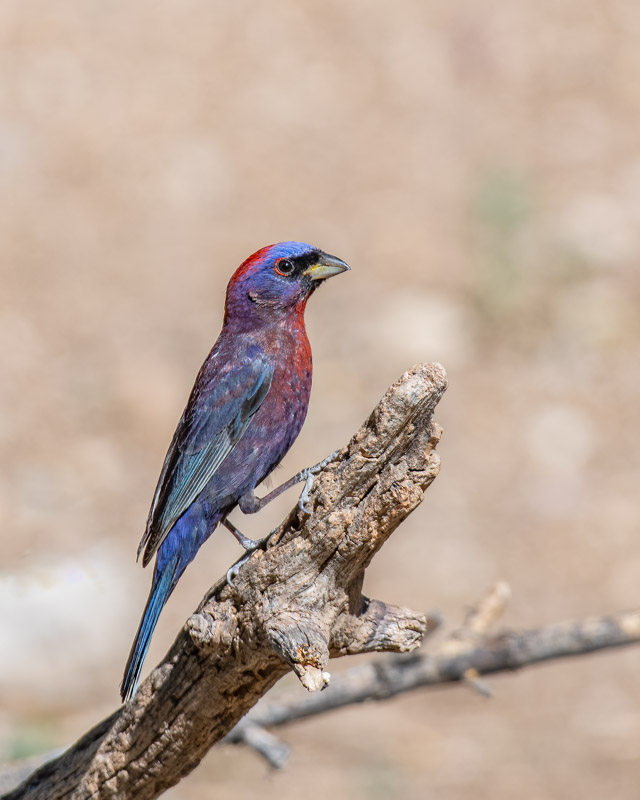
This range map, from allaboutbirds.org shows where and when Varied Buntings can be found.
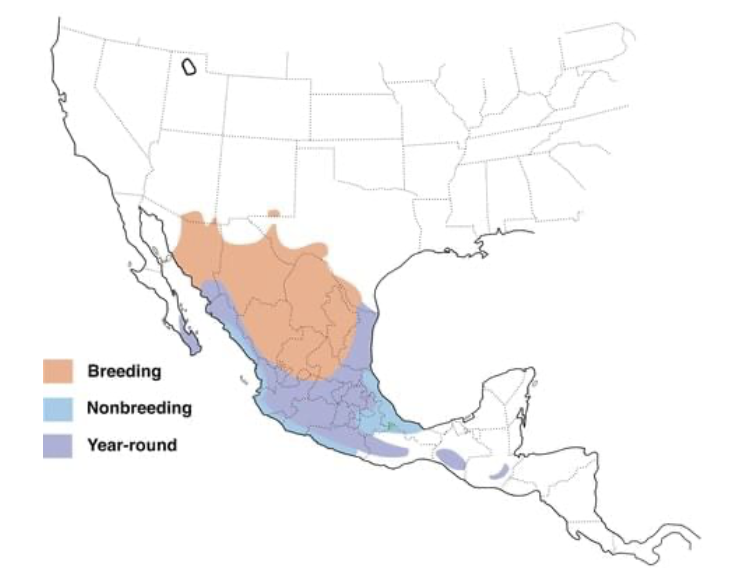
White-breasted Nuthatches are common throughout the United States. Usually you see them moving quickly along branches of large deciduous trees and up and down the trunk, even walking upside down. This White-breasted Nuthatch stopped right in front of me on a fence railing.
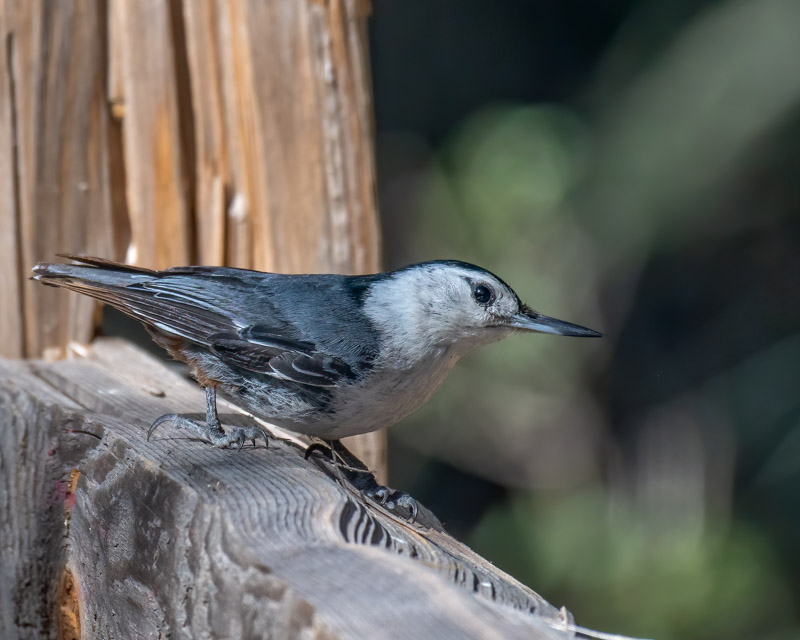
Mexican Jays are noisy birds of the Mexican Mountains and can be found in the oak woodlands of western Texas, New Mexico and Arizona. They are very social birds who live in large groups. The pair below included an adult and a younger bird who came down to the creek to drink. Note that the bird in the back has some white or flesh coloring at the base of its bill. That light area may take up to two years to turn entirely dark.
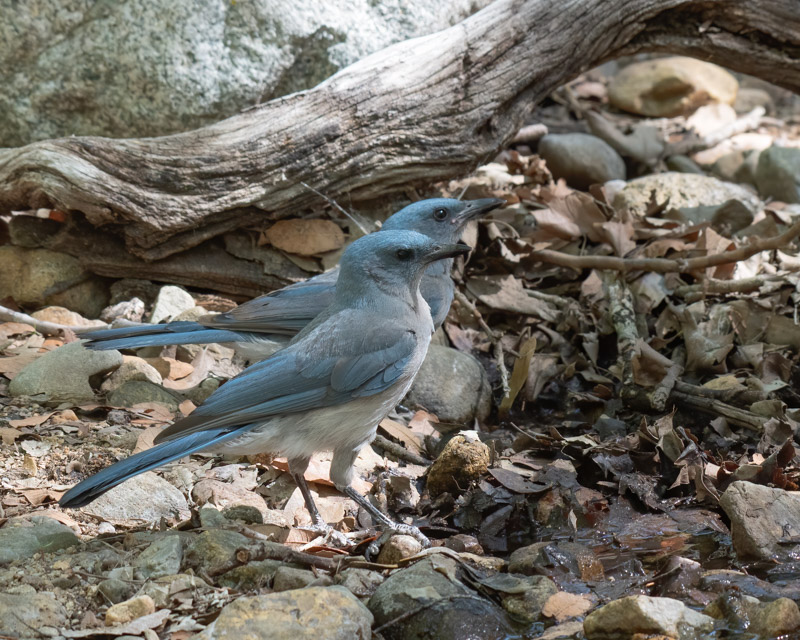
The two birds ’took turns’ drinking. Whether this was coincidence or a way to always have one bird looking out for intruders while the other drank, I do not know. It was fun to see them taking turns though. Like most birds, the Mexican Jays drink by dipping their bill in water and then throwing their head back to swallow.
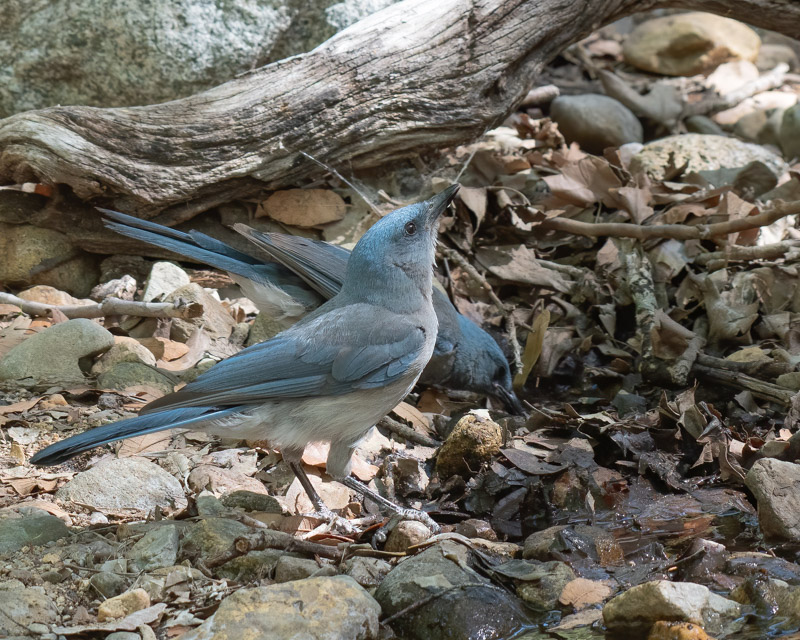
Acorn Woodpeckers are pretty easy to find because of their loud and flashy presence. I heard this little one begging from its nest cavity. Here is is looking for its parents, waiting for them to return with food.
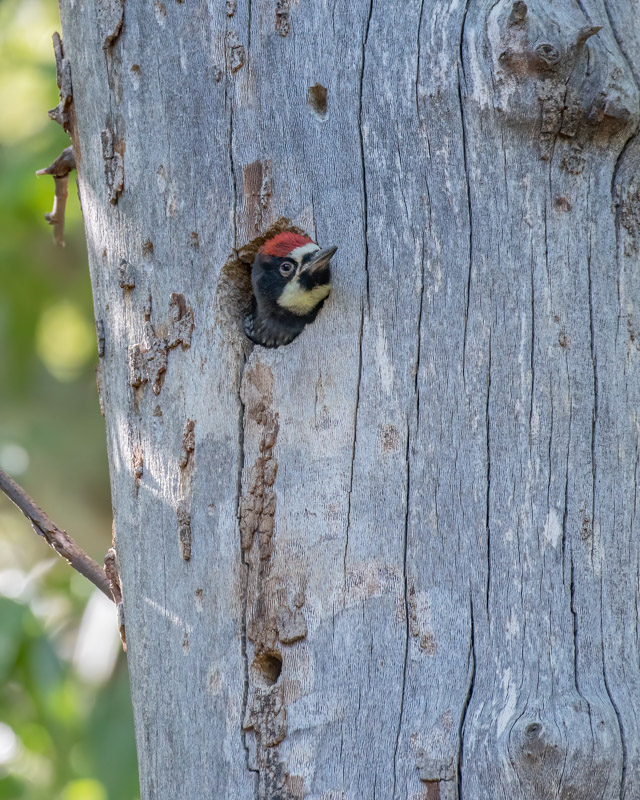
Here mom has brought an insect, perhaps a grasshopper to her eager baby. I know it is the female adult because, in another photo, I see that she has black on her head between the red cap and her white forehead. The baby Acorn Woodpecker is likely a male. You can see that his red cap touches the white forehead with no black in between.
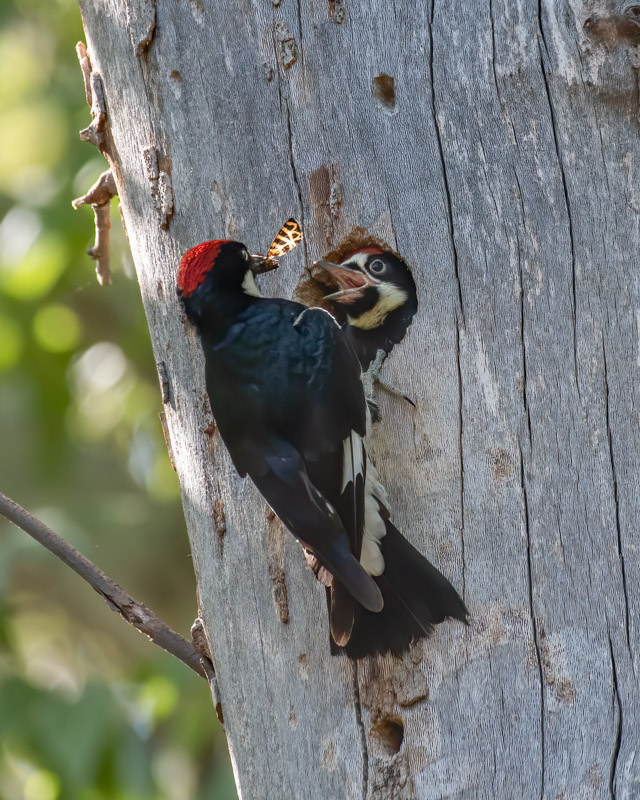
Of the many flycatchers that arrive in southern Arizona for the summer breeding season, the Sulphur-bellied Flycatcher is one of the last to arrive. This is a bird of the tropics which has an unmistakable call, resembling a squeaky rubber toy. You can hear this bird and see its American summer range at https://www.xeno-canto.org/327816 The bird below remained high in the canopy and was working on building a nest in a cavity while continually being harassed by a pair of Acorn Woodpeckers. Life can be tough!
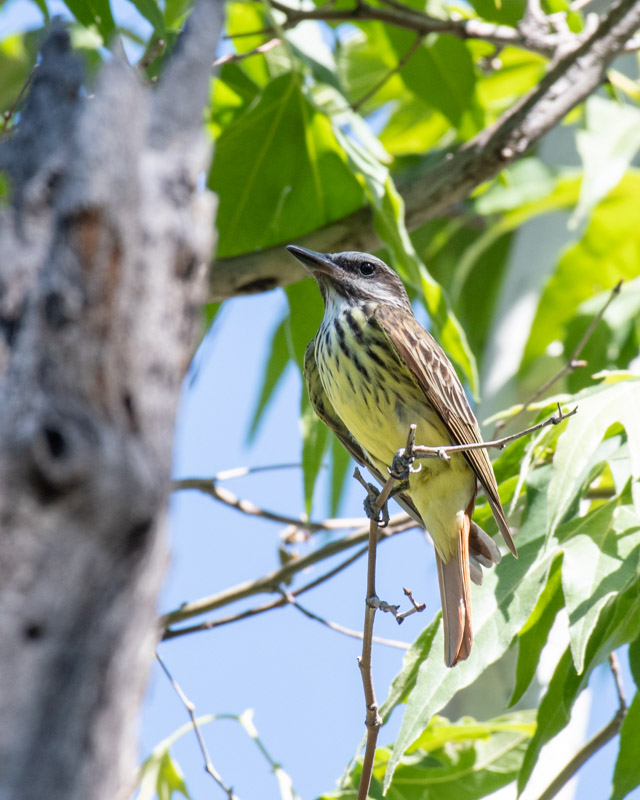
On the way out of Madera Canyon, this coyote crossed the road in front of me. We both stopped- the coyote to check me out and me to check out the coyote. It was interesting to see that this coyote was still shedding its winter coat. Its body already has the sleek summer coat while its head and neck are still wearing winter fur!
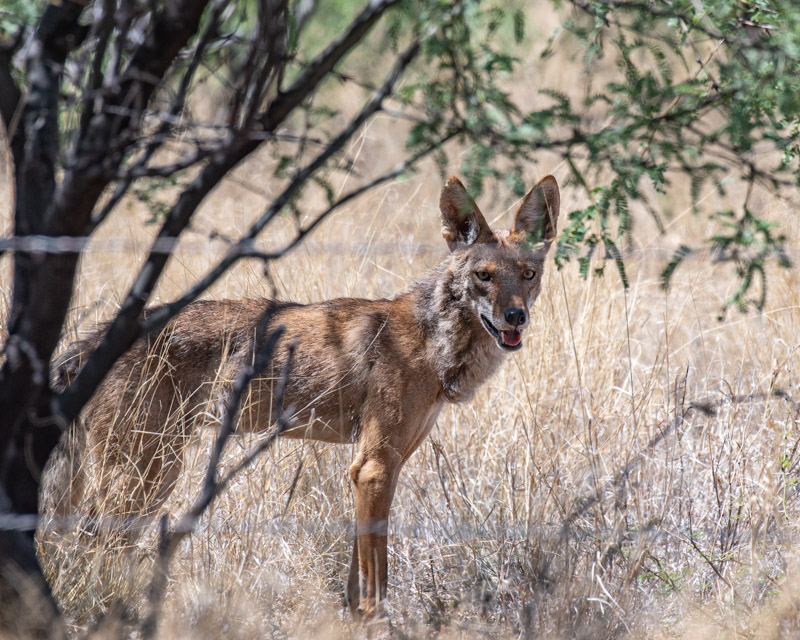
After more than a month away, I returned to Madera Canyon last week. Again, the ’target’ bird was the Elegant Trogon. I neither heard nor saw any! This time I think it was due to the very hot spell we were experiencing and that all of the Trogons had very smartly traveled up the creek into higher and cooler elevations. Still, many other beautiful birds were to be seen. I’ll show a few in this email and then send another email in a few days with others.
This Bridled Titmouse was the first bird I saw upon arriving to my parking spot. As expected, this small bird was part of a foraging group. The size of a chickadee, this bird’s crest and striking head pattern are distinctive. You can hear its chattering sounds here https://www.bird-sounds.net/bridled-titmouse/
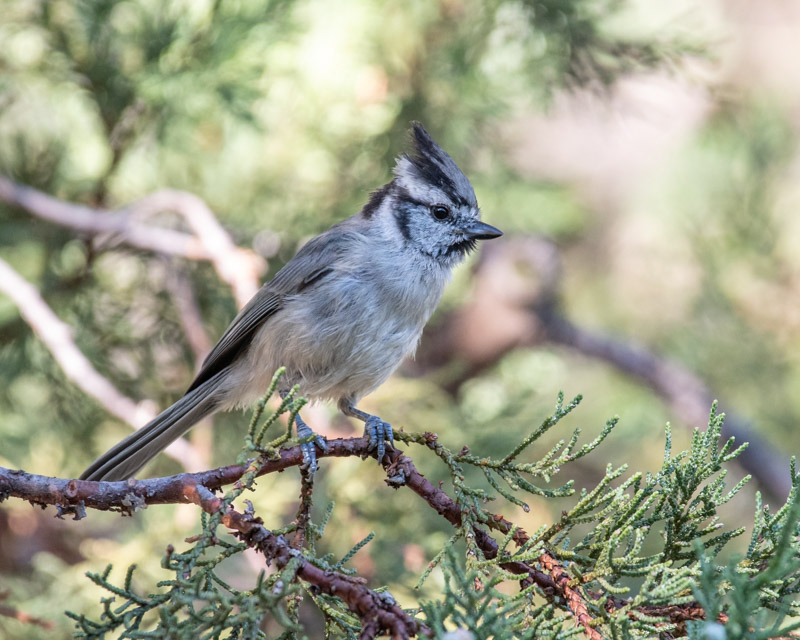
Black-headed Grosbeaks are common in the summers throughout the western US. Their large (gross) beaks are useful for cracking large seeds but also help them to crush hard-bodied insects. This bird is either a female or immature bird. Male adult Black-headed Grosbeaks have a black head!
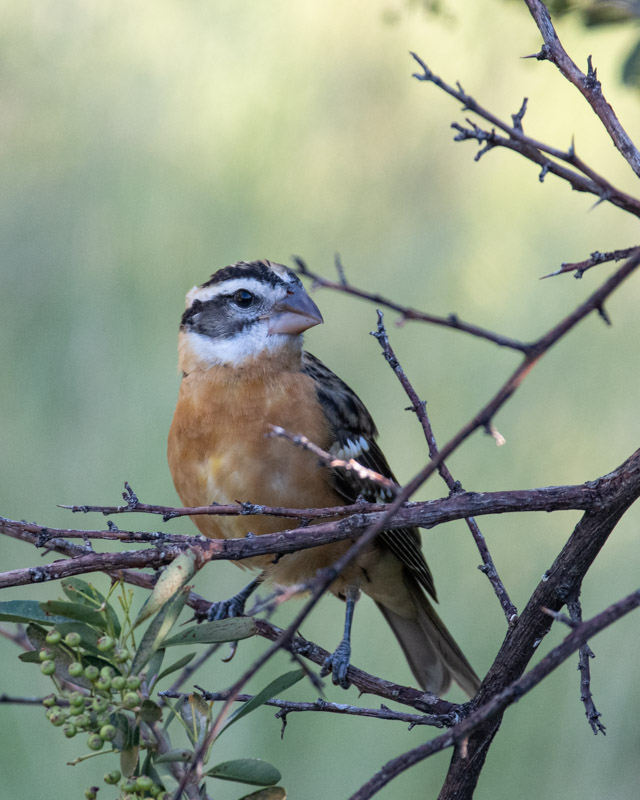
Broad-billed Hummingbirds were the most common ones at the feeders at the Santa Rita Lodge. This one of the “Madera Canyon” birds that we also have at our hummingbird feeders in the Foothills.
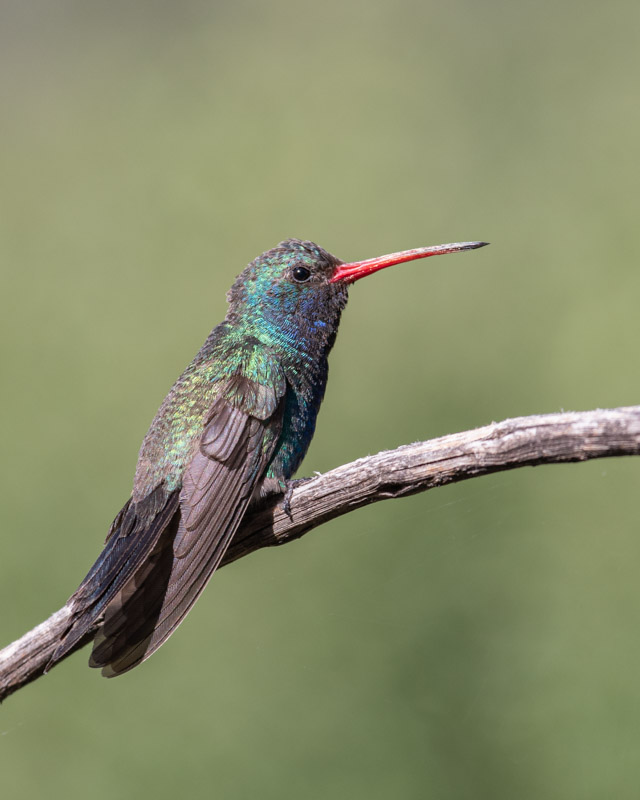
A spectacular bird made a brief appearance at the Lodge. This is a male Bullock’s Oriole. They are fairly common summer residents in much of the western US and can be found in arid, riparian woodlands.
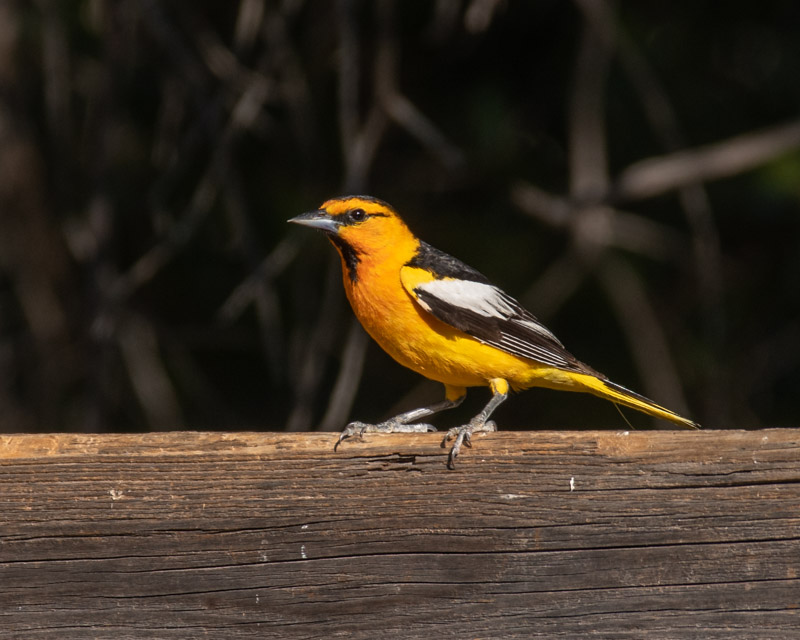
These birds were just the start of my morning. To see the other birds from Madera Canyon, check on Nextdoor or on this wildlife page in another day or two!!
